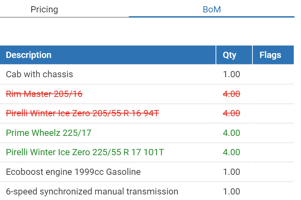CPQ (Configure, Price, Quote) systems are often designed with a clear goal: automate every step of...
The Rise of Omnichannel in CPQ: Why Manufacturers Need to Adapt
Manufacturers are making a big mistake by treating CPQ systems as internal tools when the real power lies in putting them in the hands of customers. Why? Because the future of sales is omnichannel—letting customers, partners, and sales teams access configuration tools wherever and whenever they need them.
Swift Lifts figured this out when they made a bold move to put their configurator online, letting potential buyers configure their own home elevators without ever talking to a salesperson. And it worked. Sales skyrocketed, customer engagement improved, and they captured markets faster than ever. What Swift Lifts understood is that most buyers don’t want to jump through hoops just to get a quote—they want to customize products on their own time, from their phones, tablets, or laptops.
So why aren’t more manufacturers doing this?
The problem is simple: many companies are still stuck in the mindset that a CPQ system is something only sales reps should use. This is a missed opportunity. By restricting access to configuration tools, they’re limiting their sales reach. Omnichannel CPQ, on the other hand, opens up a world of possibilities. It allows manufacturers to engage customers directly, guide them through complex products in a simplified way, and ultimately close deals faster.
Take Swift Lifts again—before their omnichannel system, they were primarily dealing with architects and partners who manually handled configurations. After putting their configurator online, customers could now explore elevator options directly from their homes, visualizing how it would fit into their space and getting real-time quotes. The configurator became more than a sales tool—it became part of the customer experience.
How Can Omnichannel CPQ Work for You?
-
Reach Your Customers 24/7
An omnichannel CPQ means customers can interact with your product anytime, from anywhere. Whether they’re on your website or using a mobile app, they should have access to an intuitive tool that lets them explore options, customize products, and get real-time pricing without needing a sales rep. The key is to keep it simple—don’t overwhelm them with hundreds of questions. Swift Lifts kept their online configurator streamlined by limiting the number of decisions customers needed to make. -
Consistency Across Channels
A powerful omnichannel CPQ system ensures that no matter where your customers or partners access it—whether in a showroom, on their phone, or through your website—they get the same accurate and up-to-date information. The last thing you want is a customer getting one price online and a different one from a salesperson. Synchronizing your CPQ across all channels ensures uniformity and builds trust. -
Streamlining Complex Configurations
One of the biggest challenges manufacturers face is simplifying complex configurations for end-users. Your sales team might be able to navigate your CPQ with ease, but your customers can’t be expected to answer 300 product-specific questions. Instead, boil down your product configurations to the essentials. Group related options, provide guided selling, and give users clear visuals that help them make quick, informed decisions. Swift Lifts called their approach “Build Your Lift”—it wasn’t just a configurator; it was an experience. -
Global Reach, Local Focus
With an omnichannel approach, you can tailor your configurator to different regions and languages, while still maintaining centralized control. Swift Lifts did this by launching their tool in India, Sweden, and the UK, with slight variations for each market. This flexibility let them scale internationally without reinventing their system for each country.
Is Your CPQ System Ready for Omnichannel?
Adapting to omnichannel CPQ requires more than just putting your configurator online. It demands a strategic shift in how you think about your sales process and how you engage with customers. Manufacturers need to prioritize simplicity, consistency, and user experience.
The result?
Faster sales cycles, better customer satisfaction, and a significant edge over competitors who are only relying on outdated, sales-rep-driven tools.





